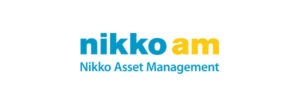
InvestNow News – 26th March – Nikko AM – February Investment Update
Article written by Nikko AM – 2021
Commentary from George Carter, Managing Director, Nikko AM
The most talked about aspect of financial markets in February was the sharp rise in bond yields. In an almost mirror image reversal of the collapse in yields last March, during February we saw them surge upwards – for example the US Treasury 10yr yield rose from around 1.1% to around 1.4% during the month. This may not sound like much, but it equates to a 3% loss in value for holders of those bonds. It’s not surprising then, that we saw bond markets around the world sell-off. The Bloomberg NZ Government Stock Index was down 4%, and the Bloomberg Corporate index in NZ was down around 1.5%, and the Barclay’s Global Aggregate Index (hedged to NZD) was down 1.5%. Last March the world was beginning to consider what the implications of a global pandemic would mean – border closures, disrupted supply lines, lockdowns and fear… this sent stock markets plummeting and bond yields falling as investors fled to safe haven bonds and central banks forced yields to new lows to help cushion some of the fallout. Roll forward 11 months and there’s positive news of successful vaccines being rolled out (or at least the route for successful roll outs, notwithstanding some rather farcical failures in the EU’s programme), and so minds are being turned to the global economy starting to re-open as the northern hemisphere heads towards summer. The US is continuing with an enormous fiscal stimulus plan which is putting trillions of dollars into the financial system, central banks are ‘looking through’ expected inflation pick-ups and are not expected to raise rates which may choke off any early economic recovery. Naturally, therefore, as markets anticipate inflationary forces coming down the line, yields start to rise at the longer end of the curve, whilst still being manhandled to the floor at the short-end by central banks. This has led to some of the steepest yield curves observed in many years for some markets.
Equity markets globally have accepted these higher rates, with most bourses rising during the month. The S&P500 was up 2.6%, the Nikkei225 was up 4.7% and the FTSE100 in the UK was up 1.2%, and the ASX300 was up 1.5% (all local currency terms). New Zealand however, bucked the trend with a fall of nearly 7%, led by the largest names with the top 10 falling over 9%. Partly due to many NZ companies having prices which are heavily linked to bond yields (think utilities), partly some idiosyncratic issues (think A2 selling into China), and likely some general nervousness about how expensive the market looked as a whole, the sell off was quite meaningful. Over the past 12 months, the NZ market performance no longer looks as favourable as it did with the market here being up just 8-9%, whereas many large global equity markets were up between 20-40% over the period, though it should be noted this has been partly fuelled by the tech boom which isn’t represented much in NZ stocks.
InvestNow News – 26th March – Nikko AM – February Investment Update
Article written by Nikko AM – 2021
Commentary from George Carter, Managing Director, Nikko AM
The most talked about aspect of financial markets in February was the sharp rise in bond yields. In an almost mirror image reversal of the collapse in yields last March, during February we saw them surge upwards – for example the US Treasury 10yr yield rose from around 1.1% to around 1.4% during the month. This may not sound like much, but it equates to a 3% loss in value for holders of those bonds. It’s not surprising then, that we saw bond markets around the world sell-off. The Bloomberg NZ Government Stock Index was down 4%, and the Bloomberg Corporate index in NZ was down around 1.5%, and the Barclay’s Global Aggregate Index (hedged to NZD) was down 1.5%. Last March the world was beginning to consider what the implications of a global pandemic would mean – border closures, disrupted supply lines, lockdowns and fear… this sent stock markets plummeting and bond yields falling as investors fled to safe haven bonds and central banks forced yields to new lows to help cushion some of the fallout. Roll forward 11 months and there’s positive news of successful vaccines being rolled out (or at least the route for successful roll outs, notwithstanding some rather farcical failures in the EU’s programme), and so minds are being turned to the global economy starting to re-open as the northern hemisphere heads towards summer. The US is continuing with an enormous fiscal stimulus plan which is putting trillions of dollars into the financial system, central banks are ‘looking through’ expected inflation pick-ups and are not expected to raise rates which may choke off any early economic recovery. Naturally, therefore, as markets anticipate inflationary forces coming down the line, yields start to rise at the longer end of the curve, whilst still being manhandled to the floor at the short-end by central banks. This has led to some of the steepest yield curves observed in many years for some markets.
Equity markets globally have accepted these higher rates, with most bourses rising during the month. The S&P500 was up 2.6%, the Nikkei225 was up 4.7% and the FTSE100 in the UK was up 1.2%, and the ASX300 was up 1.5% (all local currency terms). New Zealand however, bucked the trend with a fall of nearly 7%, led by the largest names with the top 10 falling over 9%. Partly due to many NZ companies having prices which are heavily linked to bond yields (think utilities), partly some idiosyncratic issues (think A2 selling into China), and likely some general nervousness about how expensive the market looked as a whole, the sell off was quite meaningful. Over the past 12 months, the NZ market performance no longer looks as favourable as it did with the market here being up just 8-9%, whereas many large global equity markets were up between 20-40% over the period, though it should be noted this has been partly fuelled by the tech boom which isn’t represented much in NZ stocks.



